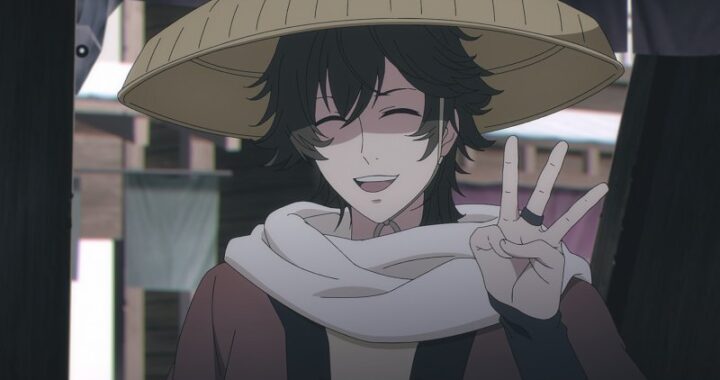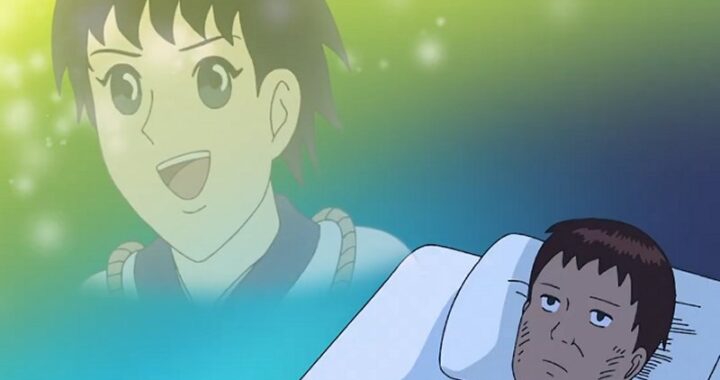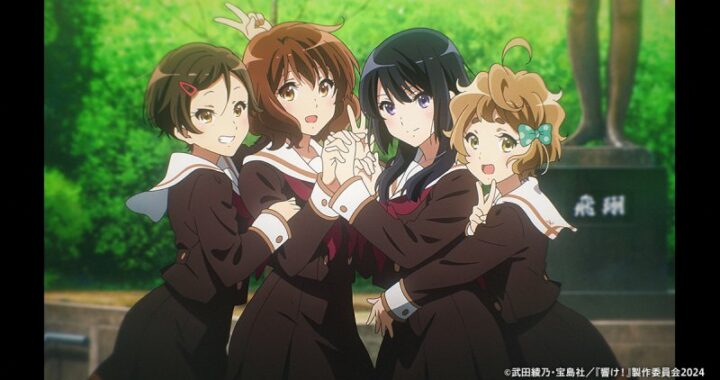BT: This isn’t going well. Time to get serious. On to Dramatic Openings. Although being dramatic is not necessarily being serious, the two often go hand in hand. These are openings that make a statement, often with lush string arrangements, or driving guitars, and stern-looking characters looking sternly into the distance. Or the characters may be doing something, well, dramatic. We’ll let the openings speak for themselves here.
BG: If the openings can speak for themselves, why are we here?
GBS: That’s a question I often ask myself, but then the person at the register just smiles weakly and asks if I want fries with that.
BT: …
So much for seriousness. I’ll leave it to Brandon to salvage things here.
BG: On the subject of speaking for one’s self, I will lead off the category with a series where the drama is about a girl who is not good at speaking up, Watamote. A particularly notable aspect of the opening is the singular character focus. The only character we see clearly depicted is the lead Tomoko, in contrast to other openings which tend to show off more of the cast. It’s rather relevant not only because the series is singularly focused on that one character, but additionally emphasizes Tomoko’s social difficulties with her solitude from the indistinct crowds of the background. Tomoko’s dramatic displays in the opening may be out of place with her public behavior in the series, but the opening can be better viewed as reflective of her state of mind, and indeed there is much contempt expressed in her private thoughts.
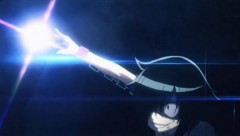 GBS: That was always one of the dangers with how they handled her character, how to express her rage and contempt without making her a completely unsympathetic character. Her facial expressions and actions in the opening animation make her look a bit like a rage-filled harpy. The reality that she is shy and withdrawn to the point of being easily ignored by others comes as a surprise after that first impression.
GBS: That was always one of the dangers with how they handled her character, how to express her rage and contempt without making her a completely unsympathetic character. Her facial expressions and actions in the opening animation make her look a bit like a rage-filled harpy. The reality that she is shy and withdrawn to the point of being easily ignored by others comes as a surprise after that first impression.
BG: The imagery that’s always interested me the most about this opening is the chains. Tomoko being chained is prevalent throughout the opening, and it strikes me as very powerful symbolism for the frustration that comes from her social awkwardness. Breaking free of those metaphorical chains can be a difficult struggle, and seeing the part with that struggle depicted is the most emotionally powerful moment of the whole sequence for me. Despite the dark, dramatic nature of the opening, it is actually rather hopeful in seeing her “break free” in the end, being reflective of Tomoko’s ultimate goal. The reality is that the struggle is more often in vain, as tends to play out in the series itself.
GBS: I found the series hard going on many occasions, partially because of the goodwill a viewer normally has for the lead character, partially because I could not quite grasp how incredibly withdrawn and terrified of others Tomoko is. I can understand social anxiety and awkwardness, but…not being able to interact casually with a store clerk? If she’s filled with rage, she should really be raging against herself.
BT: And I thought it was one of the smartest dark comedies anime’s ever produced. Which, in fact, is what really interests me about its opening. The dry humor of tragedy and the sly winking in Tomoko’s behavior in the show proper is not present. Behind all of that in the story is this, instead: Tomoko alone, Tomoko struggling, Tomoko coming apart at the seams (the unfinished rough animation at the very beginning I always found an audacious way to kick things off). There’s much unconventional, and genius, about Watamote, and the opening lets you know right away.
That’s a winner, right there. We may not be able to compete. At least, I won’t with anything contemporary. For dramatic themes in openings, I’ll have to hearken to the distinctly overcharged action-drama of the 1990s. So many choices, but I’ll settle on something from square in the middle, and a defining piece of anime sci-fi: Armitage III. The original four-part OVA series.
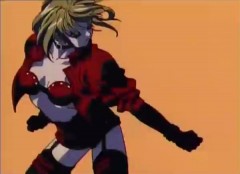 The techno beat, the dramatic action freezes, the stark flashes of color, the dark, labyrinthine, and almost dystopian cityscape setting—oh, yeah, and the sex appeal verging on fetishisment—are all features of action and sci-fi anime from the late 80s through the mid 90s. The Dirty Pair, Iria, or Dominion are good examples, and other favorites. The Armitage III opening does it all with more style and daring than normal, drawing on those traditions, if it can be called that, and setting a tone that some other shows (and their openings) would attempt later.
The techno beat, the dramatic action freezes, the stark flashes of color, the dark, labyrinthine, and almost dystopian cityscape setting—oh, yeah, and the sex appeal verging on fetishisment—are all features of action and sci-fi anime from the late 80s through the mid 90s. The Dirty Pair, Iria, or Dominion are good examples, and other favorites. The Armitage III opening does it all with more style and daring than normal, drawing on those traditions, if it can be called that, and setting a tone that some other shows (and their openings) would attempt later.
BG: All of those elements made for a pretty cool opening. The sex appeal certainly got my attention right away, with her pulling up her legwear and gloves.
BT: Oh yeah, the old dominatrix look has always sold copies in anime. The titillation risks edging the dramatic tone of the opening into something more crass, but that’s the concept and draw of Armitage III itself (and Armitage herself). Also see: anime.
GBS: Those other choices were both very good, very good indeed. But when I think about drama in openings, I immediately think of the tense, dense, and murky world of cyber soldiers in the universe of Masamune Shirow’s Ghost in the Shell, specifically the highly dramatic second season of the television series, GitS: Stand Alone Complex 2nd Gig. The opening sequence is a series of dramatic sweeps and turns with very careful and complex framing and posing of the characters. The first season’s opening played up the Major’s (Motoko Kusanagi) sexiness. In contrast, this time much more emphasis is placed on her role as leader of what we could call Public Security Section 9’s strike team, the frontline battle squadron in the perilous world of human-cybernetic interaction.
BG: Yeah, the framing and posing of the characters really sticks out to me. It’s always interesting to me to see which scenes from opening animations get fans inspired to parody by inserting characters from different series in the same poses. The lineup scene in this opening is one of them, as is the scene of the main three I mentioned when I was discussing Nichijou’s opening.
 BT: GitS: SAC was just the thing I had in mind as leading off from Armitage III, almost a decade earlier. Some of the art design had by this point become a little more sophisticated, a little more obviously digital (but fitting, here), but the earnestness and adrenaline-charging purpose remains intact. 2nd Gig does this perhaps better than the first season. Though the Russian-ish/English-ish song always felt a little too affected for my tastes. I kind of miss the old just over the top techno and glam-rock of the old action openings. (In some ways, however, it’s not bad much of that has been put to rest.)
BT: GitS: SAC was just the thing I had in mind as leading off from Armitage III, almost a decade earlier. Some of the art design had by this point become a little more sophisticated, a little more obviously digital (but fitting, here), but the earnestness and adrenaline-charging purpose remains intact. 2nd Gig does this perhaps better than the first season. Though the Russian-ish/English-ish song always felt a little too affected for my tastes. I kind of miss the old just over the top techno and glam-rock of the old action openings. (In some ways, however, it’s not bad much of that has been put to rest.)
But another sure-fire winner for this round, there. Let’s all pat ourselves on the back. We managed to be serious and professional here. And it looks like we all won—
GBS: But, we can’t all be winners. It says so in the Rulebook.
BT: —nothing at all. Drat! Time to watch that Watamote opening again. Should match my mood at this point.


